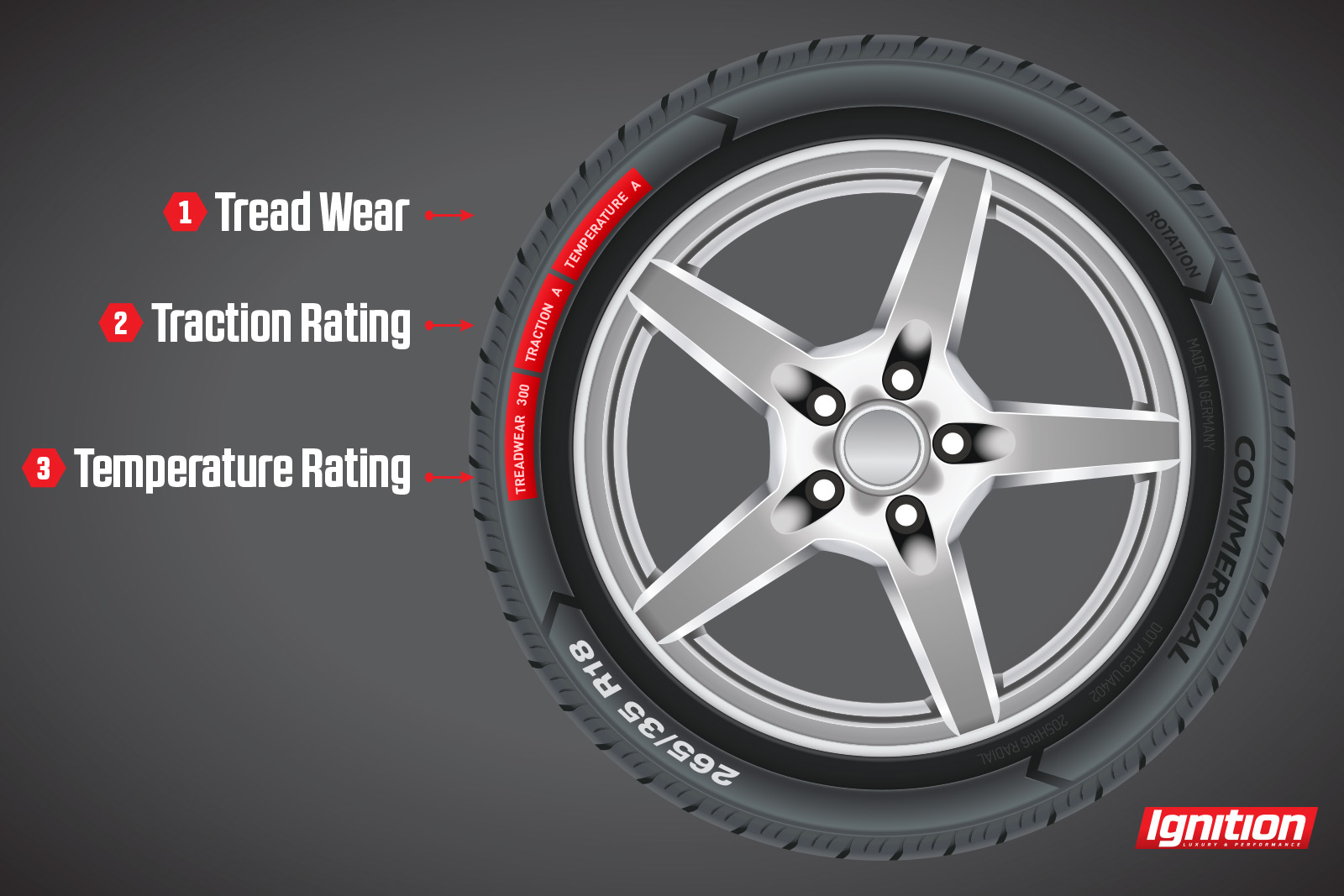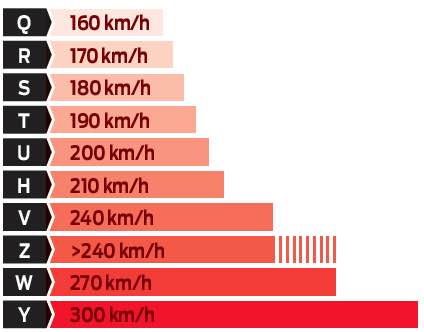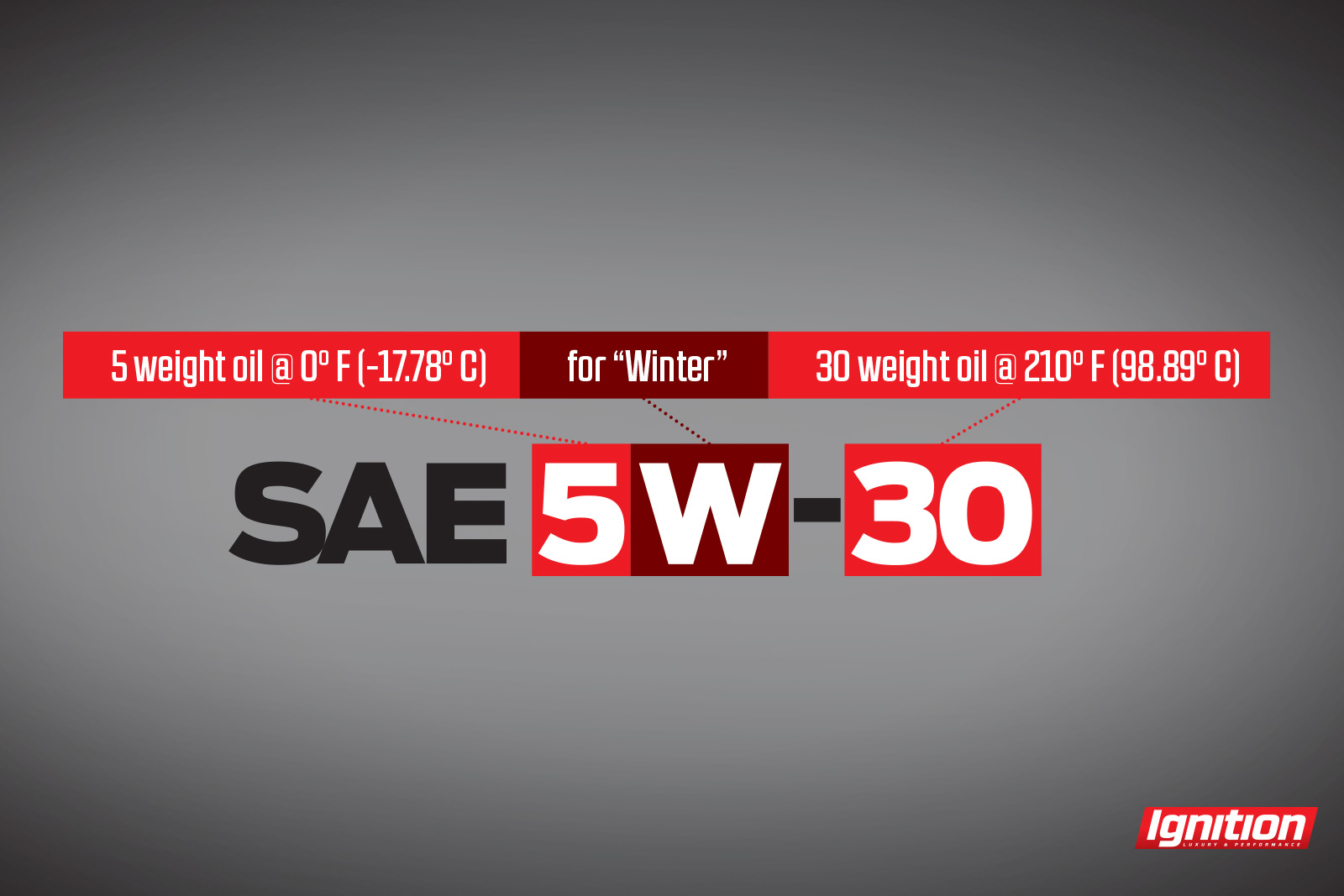
Choosing the Right Tire
When choosing a tire, there are more factors to consider than just size alone. You should also consult the Uniform Tire Quality Grading (UTQG) guide. The UTQG provides insight into how well the tire grips, how it performs under high temperatures and how long it should last.
The UTQG Has Three Components:
- Tread Wear
This number represents a tire’s wear rate. The higher the number, the better its wear characteristics. A rating of 300 should last approximately 30,000 miles (under ideal conditions), while a 400-rated tire should last twice as long as a 200-rated tire. It is important to remember, however, that this rating does not determine performance. Many high-performance tires have lower ratings because they provide excellent grip, but wear quickly. -
Traction Rating
Rated from high to low, tires receive either an AA, A, B or C rating. The rating depends on a tire’s ability to stop on wet pavement. Generally, a higher rating is preferable, but it depends on its intended use. For example, if it’s going to be used as a street or track tire. -
Temperature Rating
Like traction, temperature ratings run from high to low. Tires are given either an A, B or C designation for their ability to dissipate heat and resist heat degradation. The temperature rating is based on a 30-minute test at high temperatures to ensure against sudden tire failure or a drop in performance.
Letters and Numbers: What they all mean
EXAMPLE: 265/35 R18
265 = MM WIDE (26.5 cm or 10.4 inches)
35 = PROFILE HEIGHT / PERCENTAGE ( % ) OF THE WIDTH (sidewall height = 92.75 mm or 3.6 inches)
R = RADIAL TECHNOLOGY (a “ZR” signifies a “Z” speed rated tire = more than 240 km/h capability)
18 = WHEEL DIAMETER (in inches)
Speed & Load Ratings
Finally, load and speed ratings are also found on every tire. These values are expressed as a number and letter after the tire size, although they can also be incorporated into the tire size (i.e. 265/35 R18 93Y or 265/35 YR18). A 93Y on the load index means the tire can handle up to 650 kilograms (1,433 pounds) of load. The Y indicates the top speed rating. See the chart below for the complete breakdown.


Weighing In
You’ve seen them countless times before. When the topic of motor oil comes up, these alpha-numeric codes usually aren’t far behind: 10W-30, 10W-40, 5W-30 and so on. Essentially, what these numbers refer to are the varying oil thicknesses (viscosity) and the temperature ranges they’re designed to operate within.
Because your vehicle is designed to work under certain operating conditions and within certain lubrication limits, it’s important to understand the characteristics of different oils. Doing so will help you choose the correct one depending on the application. Generally, you shouldn’t deviate from the manufacturer’s oil recommendations unless you are highly experienced or have spoken to a mechanic.
Here’s the low-down on oil and its attendant numbers.
Single vs. Multi-viscosity
Single-viscosity oils carry the same fluid properties at both high and cold temperatures. Originally designed for use in automobiles, they’ve since been relegated to power equipment such as lawnmowers and snowblowers due to advances in automotive engine technology and viscosity requirements at different temperatures. An example of a single-viscosity oil is SAE 30.
Most engines are designed to work with multi-viscosity oils due to their ability to operate effectively at different temperatures, in either hot or cold temperatures. Examples of these are 10W-30 or 5W-50.
Oil Weight
Oil number designations represent the oil’s weight at a given temperature. The Society of Automotive Engineers (SAE) rates oil based on its properties at hot and cold temperatures, measured in Fahrenheit. The cold temperature baseline is 0° F (-17.78° C), while the hot temperature baseline is 210° F (98.89° C). A lower oil weight means greater fluidity (low viscosity). For example, a 5W-30 at -17.7° C has high-flow properties in cold temperatures, which is critical for engine start-up during frigid Canadian winters. At 98° C, it operates as a thicker 30 weight oil, protecting components and optimizing performance once it reaches operating temperature. This multi-viscosity affect is achieved through oil additives that activate once the engine reaches a specific temperature.
Your engine has certain oil requirements depending on its design and components, but using this guide as a baseline may help you (or your mechanic) choose the right oil for your car depending on engine condition and driving habits.
Conventional / Synthetic
Deciding between a conventional oil and a synthetic is usually based on driving habits. Generally, synthetic oil is more durable and resistant to high-temperature breakdown than conventional oil. Synthetics are also provide less resistance, which can free up additional horsepower for greater operating efficiency. Synthetic oils carry a longer lifespan than their conventional counterparts, and while that means your oil change intervals can be extended, it’s generally a good idea to follow the manufacturer’s recommended change cycle.
There are a couple of things to consider if you’re using a conventional oil and thinking of changing to a synthetic. First, contrary to popular myth, it is completely acceptable to switch so long as your vehicle is in good shape with relatively engine new seals. The main concern with regard to switching to a synthetic is because it is generally less viscous, is has a tendency to find pre-existing leaks. If you’re already burning through conventional oil, you should have your seals checked or you’ll wind up burning through even more with a synthetic. Secondly, synthetics also cost more (a lot more) than conventional oils, often three to five times as much depending on the brand.
So, should you make the switch? The answer really depends to how much you value your car. Synthetics can help to prolong seals (assuming they’re not damaged) and doing so will pay off in the long run.
Lastly, many Canadians are choosing to switch to synthetic oil in the winter months to help with cold start-ups, where conventional oils can become a bit syrupy. If cost is an issue, this is an acceptable method that will help prolong the life of your engine.






















